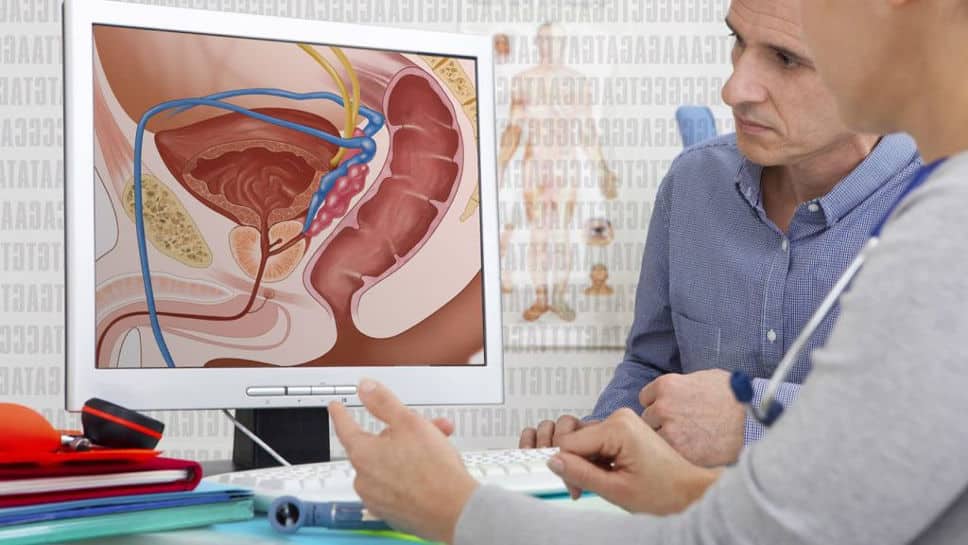Last Updated on July 7, 2024 by Max
Introduction
In the rapidly evolving field of medical science, the interconnection of diseases often opens up new avenues for treatment. This blog post explores an intriguing correlation studied in recent years – the link between prostatitis, benign prostatic hyperplasia (BPH), and varicocele. Could the treatment of varicocele offer a cure for prostatitis? Read on as we summarize key research findings, elucidate this intriguing hypothesis, and shed light on how these conditions relate to each other.
Exploring the Prostatitis Cure: A Closer Look at Varicocele Treatment
Exploring the Prostatitis Cure: A Closer Look at Varicocele Treatment
BPH is a condition involving the enlargement of the prostate gland. Notably, BPH affects roughly 50% of men between the ages of 50 and 60, and this prevalence increases to 90% for men over 85. The roots of BPH are tied to the failure of one-way valves in the internal spermatic veins, leading to a condition known as varicocele. This varicocele acts as a barrier, blocking free testosterone produced in the testes from entering the circulatory system. Instead, it enters the prostate, boosting the testosterone concentration approximately 100 times higher than in the peripheral blood. This spike in testosterone induces the proliferation and growth of prostate cells, causing the gland to enlarge—a primary characteristic of BPH.
Both BPH and varicocele are age-dependent processes. The enlarged prostate becomes more susceptible to inflammation, increasing the risk of prostatitis, an inflammation of the prostate gland. However, it is worth noting that BPH does not necessarily lead to prostatitis.
To keep our prostates healthy and avoid complications, it is essential to address the origins of BPH. We can achieve this by maintaining healthy blood circulation in the pelvic area, thereby preventing varicocele. If varicocele has already occurred, corrective treatment can be pursued. However, it is crucial to understand that BPH treatments, whether chemical or surgical, do not guarantee the resolution of prostatitis.
Scientific evidence of benign prostatic hyperplasia reversal by varicocele repair.
Gat Y. et al. 2008 proposed a fascinating mechanism explaining the development of BPH due to testosterone drainage blockage from the testicles, a blockage imposed by varicocele (Gat Y. et al., 2008).
Following varicocele repair in a group of 28 patients, significant improvements were observed: prostate volume reduced on average from 56 to 36.9 ml, prostate-specific antigen (PSA) levels dropped from 3.56 to 3.2 ng/ml, and nocturia decreased from an average of 3.56 times per night to only once (Gat Y. et al., 2008).

In another study involving 901 BPH patients, all were found to have bilateral varicocele. Following spermatic vein sclerotherapy, over 80% of the men experienced a reduced prostate volume, with symptoms of prostatitis markedly improved (Goren M, Gat Y., 2018).
In one more case, 81.5% of patients with significantly reduced prostate volume and improved prostatitis symptoms were obtained. In this study, a total of 206 BPH patients with varicocele repair were followed-up over two years. The authors concluded that varicocele treatment restores the regular supply of testosterone to the prostate, significantly decreasing prostate volume and prostatitis symptoms.
Conclusion.
Varicocele affects men mainly at sexual maturity, while BPH typically becomes evident after 45 years. During this interval, our bodies adapt to the abnormal conditions created by varicocele. Expecting a single varicocele surgery to reverse BPH ultimately may be unrealistic. However, varicocele treatment significantly improves BPH and prostatitis symptoms, offering a new way to manage these conditions. If you detect varicocele symptoms, it is advisable to consult with your doctor promptly. Early intervention may not only prevent BPH.
References
Y. Gat M. Gornish M. Heiblum S. Joshua. Reversal of benign prostate hyperplasia by selective occlusion of impaired venous drainage in the male reproductive system: novel mechanism, new treatment. Andrologia 2008 Volume 40, Issue 5.
Goren M, Gat Y. Varicocele is the root cause of BPH: Destruction of the valves in the spermatic veins produces elevated pressure, which diverts undiluted testosterone directly from the testes to the prostate.
Andrologia. 2018 Jun;50(5)
Goren M, Gat Y. Varicocele is the root cause of BPH: Destruction of the valves in the spermatic veins produces elevated pressure, which diverts undiluted testosterone directly from the testes to the prostate.
Andrologia. 2018 Jun;50(5)
